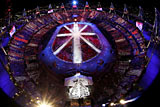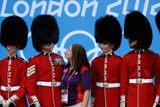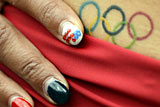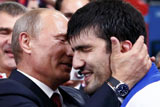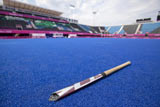Judo
Updated: 2012-05-16 10:14:28
(london2012.com)
|
|||||||||||
Judo contests are a five-minute whirlwind of combat, with athletes attempting a combination of throws and holds in a bid to defeat their opponents.
Developed from jujitsu and established as a sport in the late 19th century by Dr Jigoro Kano, athletes use an intricate mix of attack and defence. The sport's one-on-one battles can be tough, tense and explosive, as competitors grapple for command against equally determined opponents.
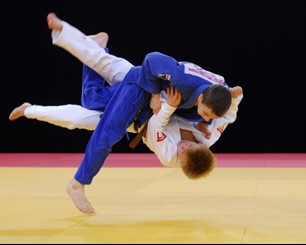 |
Competition dates
July 28– Aug 3
Competition venue
ExCeL
Number of medal events
14 - seven weight categories for men and seven for women.
Number of competitors
386 (221 men and 145 women). 20 additional places to be decided by May 2012. Each country is limited to one athlete in each event.
Field of play
Judo contests are fought on a mat, or tatami. The mat is 14m x 14m, with a smaller contest area of 10m x 10m marked inside it.
History of Judo at the Olympic Games
Judo made its first appearance as a medal sport at the Tokyo 1964 Games. The women's competition was added to the programme at the Barcelona 1992 Games.
The basics
Reflecting its origins, much of the terminology of Judo is Japanese.
Two athletes (judokas) gain points for throws and holds in a bid to beat their opponent. A contest lasts a maximum of five minutes, and the athlete with the highest score is the winner.
The best score is ippon, which can be achieved for a throw, a hold, a strangle or an armlock, and results in immediate victory. Other scores are waza-ari and yuko. These depend on the type of throw or how long a judoka can immobilise his/her opponent.
At the start of each contest, the athletes stand 4m apart, facing each other on the tatami. The referee gets the contest underway by shouting 'Hajime!' and stops it by shouting 'Matte!'
Competition format
Athletes compete in weight categories and are divided into two groups within these categories. Competition is on a knockout system that eventually determines the two finalists who compete in the gold medal match.
In each event, the four defeated quarter-finalists compete in two repechage contests. The winners then compete against the two defeated semi-finalists to determine the winners of the two bronze medals.
In the event of a tie, the contest enters a golden score period of three minutes, when the first score wins.
Officials
A referee stays in the contest area, while two line judges sit just outside it to confirm refereeing decisions.
Keys to success
Judo is all about strength, speed and control. Scoring ippon wins the match. This can be done by throwing an opponent on to his/her back; trapping an opponent in an armhold or stranglehold – forcing him/her to submit; or immobilising an opponent on the floor for 25 seconds.
Breaking the rules
Getting a warning from the referee gives points to the opponent. This could be, among other things, for hitting or trying to injure, voluntarily leaving the tatami or passivity. Warnings range from shido through to hansukomake, which results in instant disqualification.
Medal Count |
||||
| 1 | 46 | 29 | 29 | |
| 2 | 38 | 27 | 22 | |
| 3 | 29 | 17 | 19 | |
| 4 | 24 | 25 | 33 | |
| 5 | 13 | 8 | 7 | |
| 6 | 11 | 19 | 14 | |

